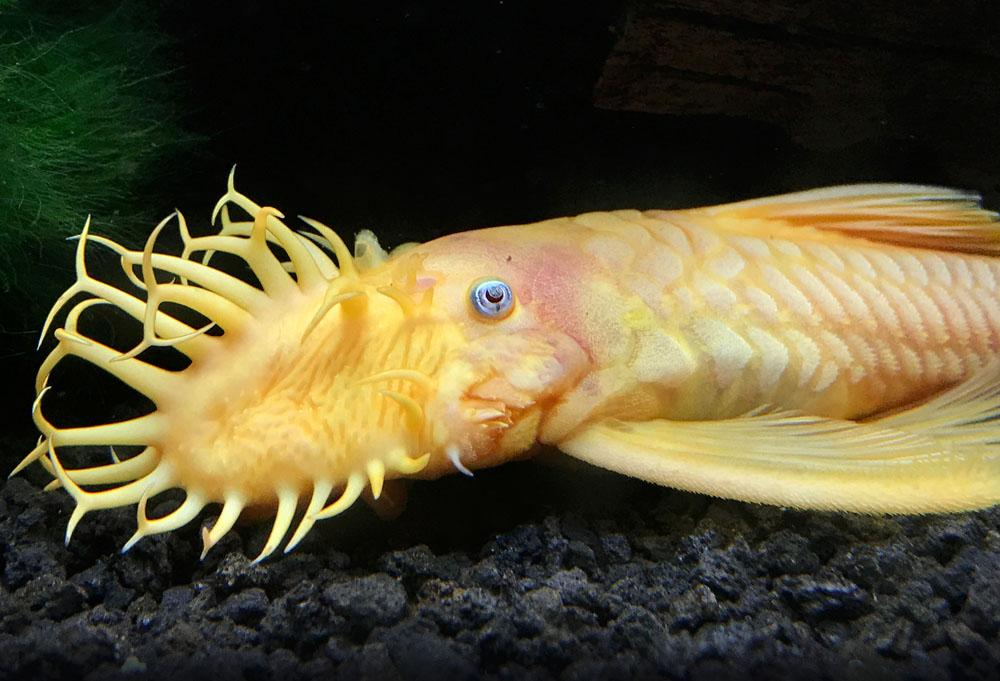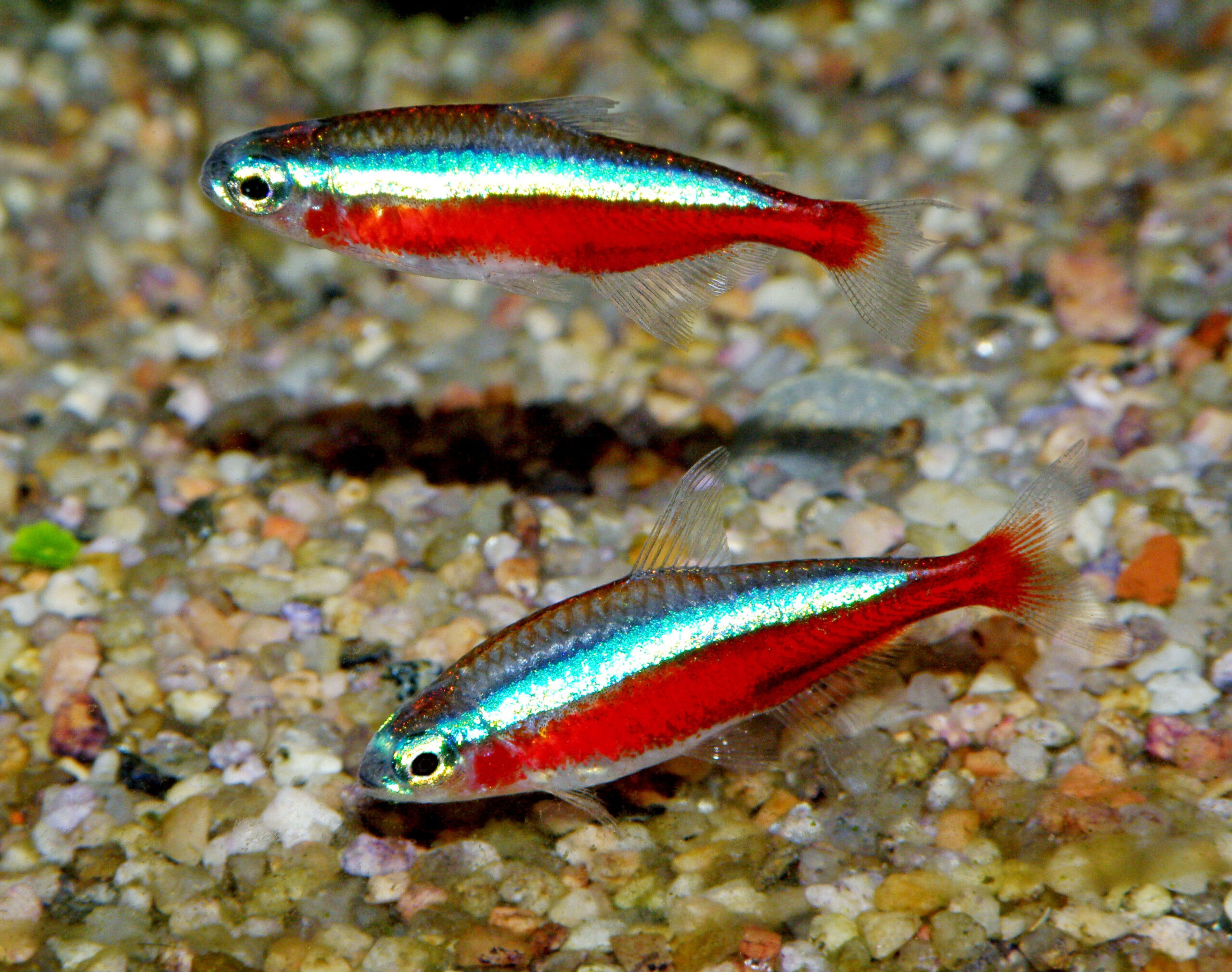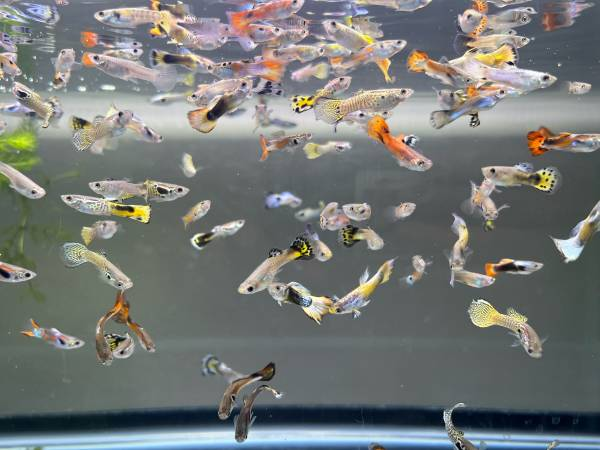The Red Fin Kadango has a lake-wide distribution, where it is encountered in almost all rocky environments along the shorelines. The aquarium should be at least 5ft long and aquascaped with open expanses of sand in addition to a few rocky areas and some thickets of Vallisneria. Decor such as ocean rock can be used to build sturdy structures which stretch from the base of the tank to near the surface of the water. These structures should be built with the purpose of creating many crevices for the fish to explore but constructed in such a way so as to keep the rocks stable if the fish start to dig around and underneath them. Although a substrate of coral sand or Aragonite is often recommended to help to keep the water hard and alkaline, these fish feel safer and show better colours over a darker substrate. The Aragonite or coral sand can always be placed into a mesh bag and kept inside the external filter for buffering purposes. The Red Fin Kadango is a relatively peaceful species, and these fish are sometimes observed in large shoals in their natural habitat. In the home aquarium, groups can be maintained together, ideally consisting of one male with a harem of several females. However, if the tank is particularly voluminous, multiple males can be kept together (again with several females allocated to each), but do provide them with an abundance of hiding places/visual barriers so they are able to set up individual territories. Aggression will increase when ready to spawn, so careful observation is required. Suitable tankmates could include relatively peaceful rift lake fish such as other Haps, Aulonocara species, some of the more mild-mannered Mbuna, or Synodontis catfish etc. There are several geographical colour morphs available, including ‘Mara Point’, ‘Mbenji’, and ‘Namalenje’.
Feeding
In the wild, this fish is primarily planktivorous, but it is not fussy and will do well on a variety of meaty frozen foods. Smaller specimens will take baby brine shrimp (Artemia nauplii), daphnia, mosquito larvae, vitamin-enriched brine shrimp, and Mysis shrimp, whilst larger fish will take krill, chopped prawns etc. A good quality flake and appropriately sized cichlid pellets should also be provided.
Breeding
Maternal mouthbrooder. When ready to spawn, the coloration of the male will intensify. He will choose and clean a spawning site, either a flat rock or a small depression dug in the substrate, then display to the female fish until one accepts him. They will circle each other in a head to tail manner a number of times, until the female deposits her eggs. These are deposited a few at a time and after doing so, she immediately turns around and picks them up. At the same time, the male will rotate so that he is almost on his side, at the same time shaking and extending his anal fin, releasing his milt. The female sees the egg spots on the male’s anal fin and attempts to pick up those “egg’s”, whilst she is picking up the real ones that she deposited, and at the same time taking in milt. This is repeated until the female is spent. The eggs may be incubated for up to 25 days until they hatch into free-swimming fry. Typical brood size numbers around 60. The young are large enough to take baby brine shrimp (Artemia nauplii) as soon as they are released.




Reviews
There are no reviews yet.